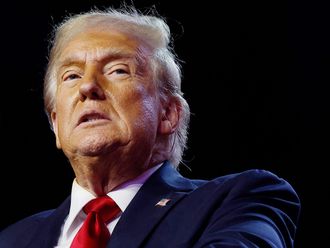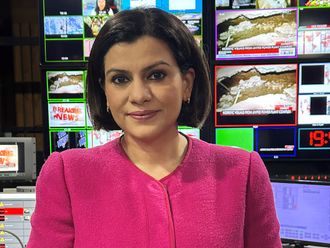
In a recent speech, China’s highest-ranking diplomat, Wang Yi, spoke of a ‘united Asia’ and its need to develop a “strategic autonomy”.
In principle, Wang was not wrong; after all, a stable and prosperous Asia would benefit the peoples of the region.
In fact, common culture, beliefs and origins have historically served as starting points of regional cohesion, unity, and collective identity.
Asia has no other option but to locate its collective common ground around equitable conditions, since the alternative will always be a Western neocolonial drive for domination.
This is a question that cannot be addressed only by politicians. It is a social and intellectual conversation of the first order and must engage all sections of societies in China, Japan, the two Koreas and beyond.
This supranational conversation must be had if the transition to a new world is to run smoothly.
The ongoing Russia-Ukraine war is a testament to how chaotic historical transitions can fuel future conflicts. But China and Asia have much better chances at resolving historical dichotomies through the finding of commonalities. This claim is supported by the fact that, while Europe is dwindling in terms of economic might and political influence, Asia is growing.
Indeed, historically, prosperity has played a major role in the formation of regional and, more recently, national identities.
For example, while political expediency convinced many of the supposedly inherent conflicts between Arabs, Muslims and the Middle East, on the one hand, and the ‘West’ on the other, such notion is misleading and historically inaccurate.
It might be shocking for some to learn that several of the great Roman emperors were Arabs or, at least, from the modern-day Middle East.
But this historical fact should not be shocking at all.
From the Libyan Septimium Severus (193-211) to Philip the Arab (244-249), to others, the existence of these emperors was not exactly inconsistent with the historical trajectory of that period.
They were direct expressions of the oscillation of the centers of wealth and military power during certain periods of the Roman Empire.
It may seem a bit of a surprise to us now because, since the collapse of the Roman Empire at the end of the fifth century, the geopolitics of the world has shifted, necessitating a modification in collective national and regional identities.
Most of the maps delineating the rise and fall of the Roman Empire were, up to a certain point, almost entirely Mediterranean-based, uniting today’s Middle East and North Africa with much of southern Europe.
Ultimately, the centre of the Roman powers, especially towards the end of the fourth century, moved elsewhere to include swathes of today’s Western Europe. And, in doing so, the Roman Empire began acquiring its stereotypical look and feel, that of being a Eurocentric experience.
New opportunities
But, for hundreds of years, most civilisations in the Mediterranean region and Asia Minor, at one point or another, were unified as a single political, social and economic whole. They borrowed each other’s systems of beliefs, social mores, cultural habits, superstitions and a sense of belonging.
Until this day, one still detects this connected past in historically rooted communities in Spain, Italy, Greece, southern France and the whole of the Middle East and North Africa.
This has changed due to the constant shifts in power centers over the years.
Strange how our sense of collective identities conveniently shifts around politics over time. Geopolitically, southern Europe now feels as if it is an entirely different space than the Middle East.
The fact that Wang Yi is stressing the urgency of a common Asia identity is itself a sign of a changing world.
And this changing world is offering new opportunities, not only for new alliances but new collective identities as well.
Dr Ramzy Baroud is a journalist, author and editor. He is the author of six books.








